2022 Bauder Lecture Series
Complicating Collections at Cranbrook: Representations of a Confederate General, the Crusades, and Native Americans
Sunday Afternoons - April 10, April 24, and May 1, 2022
3:00 to 4:30pm EDT (Eastern Daylight Saving Time)
A Series of Three Live Virtual Lectures and Conversations
Presented by Cranbrook Center for Collections and Research
Guest Speakers include Ned Blackhawk, Jennifer Borland, Mark Crain, and Alex von Tunzelmann
Hosted and Moderated by Gregory Wittkopp, Director, Cranbrook Center for Collections and Research, with Kevin Adkisson, Curator, and Nina Blomfield, Decorative Arts Trust Marie Zimmermann Collections Fellow
Admission is Free and Open to the Public
Registration Required – Zoom Link is Password-Protected
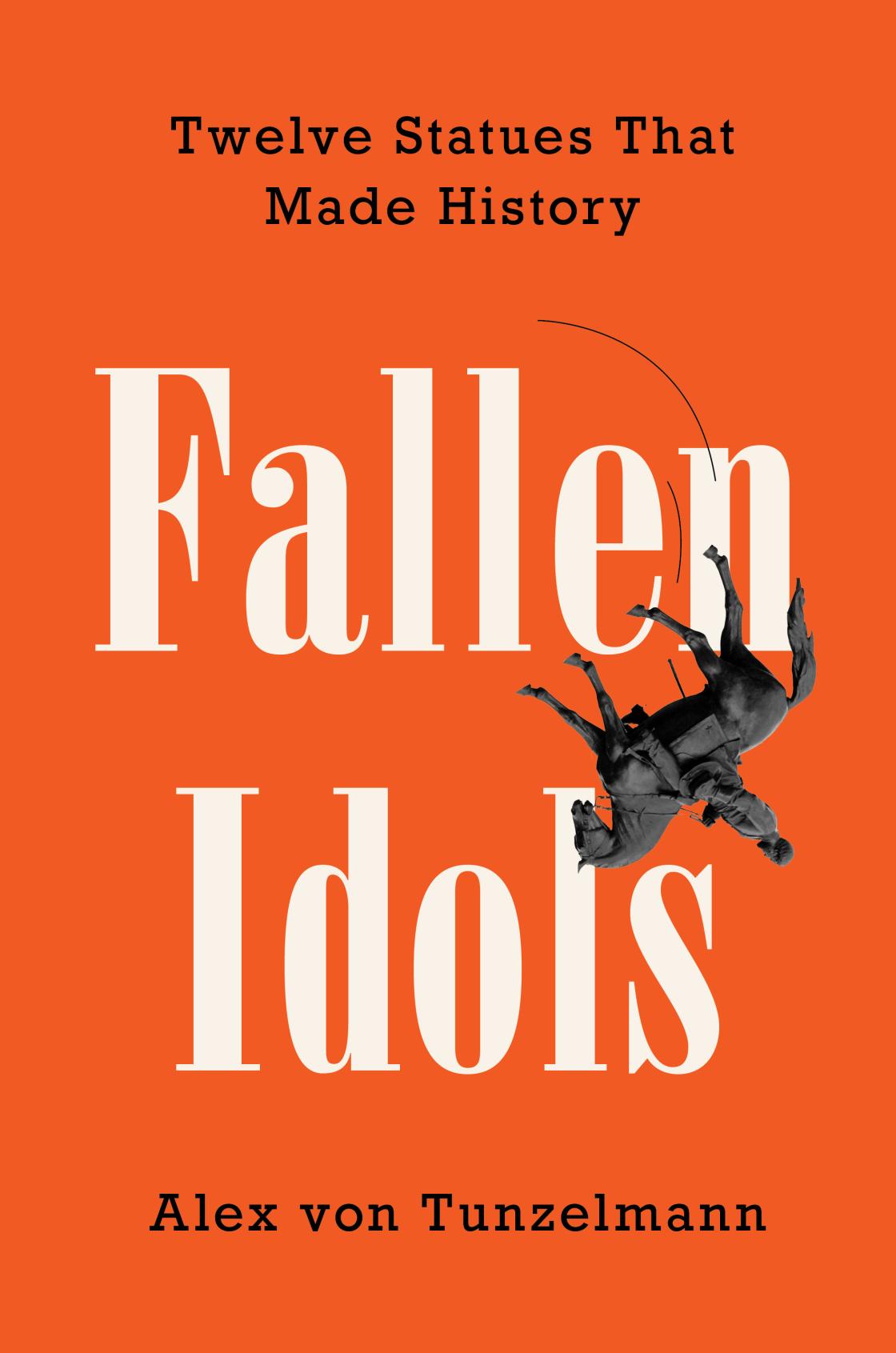
While Cranbrook’s grounds and architecture serve as sources of beauty and inspiration, several iconic works of art across the campus hold complicated histories. Join Cranbrook Center for Collections and Research as we examine and discuss some of their more problematic stories and contexts through the lens of racial and social justice.
Following in the tradition of the 2021 Bauder Lecture Series, Unsettling Landscapes at Cranbrook, the 2022 installment of this annual lecture series, Complicating Collections at Cranbrook, brings four experts to the Center’s virtual auditorium where they will contextualize and enhance our understanding of a sculptural study for a fountain in Texas by Carl Milles intended to memorialize Robert E. Lee; the depiction of the Crusades designed by George Booth and carved by John Kirchmayer in the oak overmantel in the Cranbrook House Library; and the representations of Native Americans by non-Natives in the Cranbrook Map Room, notably A Hunter of Taos painted by Oscar Berninghaus.
While admission to the Bauder Lecture Series is free, we kindly ask you to consider making a donation to support the work of Cranbrook Center for Collections and Research, including our commitment to inclusion, diversity, equity, and access (IDEA) initiatives.
You do not need to register for each lecture separately; your registration will provide access and Zoom links to all three virtual lectures.
LECTURE ONE: FALLEN IDOLS AND THE STORY OF CARL MILLES’S SCULPTURE OF ROBERT E. LEE
Sunday, April 10, 2022, 3:00 – 4:30pm EDT
The three-part lecture series opens with a presentation by the British historian and screenwriter Alex von Tunzelmann. The author of the 2021 book Fallen Idols: Twelve Statues That Made History, von Tunzelmann will explore the rise and fall of some of the world’s most famous and controversial statues to address the vital question of how societies remember and confront the past.
Von Tunzelmann’s global historical tour moves from a 1770 statue of King George III in the Province of New York and a 1926 statue of George Washington in the State of Oregon to statues of Joseph Stalin in Budapest, statues of Vladimir Ilyich Lenin across the former Soviet Union, and the statue of Saddam Hussein in Baghdad whose toppling during the Iraq War in 2003 was famously broadcast in real-time around the world. She concludes her tour in New Orleans where a statue dedicated to the Confederate General Robert E. Lee symbolizing the “Lost Cause” myth was ceremoniously erected in 1884 and pulled down in 2017 under cover of darkness.
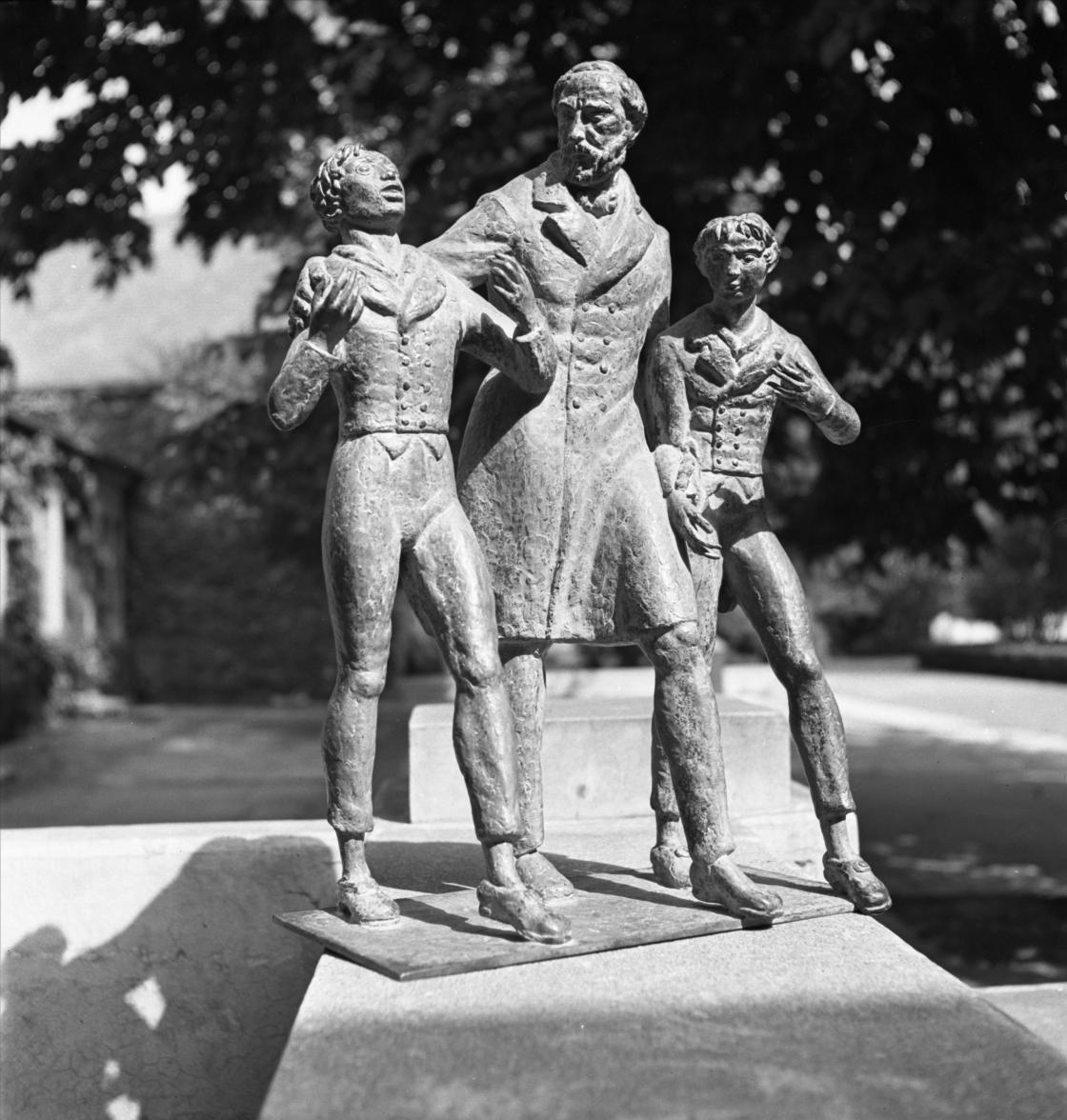
This final story brings the conversation back to Cranbrook where Cranbrook Schools students led the charge to pull down a sculpture of Robert E. Lee in 2005. Created in 1931 by the newly appointed Head of the Sculpture Department at Cranbrook Academy of Art, Swedish sculptor Carl Milles, the Cranbrook sculpture is a study for a proposed fountain commissioned by a civic group in Dallas, Texas.
Outlining its creation and history in the halls and vaults of Cranbrook will be Gregory Wittkopp, Director of the Center for Collections and Research. Detailing its toppling at Cranbrook will be Cranbrook Schools alumnus and Dream of Detroit Executive Director Mark Crain (Cranbrook Class of 2005) whose editorials in the student Crane-Clarion newspaper document the students’ successful charge for the sculpture’s removal.
Guest Speakers:
- Alex von Tunzelmann, who studied Modern History at the University of Oxford, is a British historian and screenwriter based in London. Her books include Indian Summer: The Secret History of the End of an Empire (2007); Red Heat: Conspiracy, Murder, and the Cold War in the Caribbean (2011); Blood and Sand: Suez, Hungary, and Eisenhower’s Campaign for Peace (2016); and Fallen Idols: Twelve Statues That Made History (2021). Von Tunzelmann's screenwriting credits include Churchill (2017) as well as two episodes of the Italian-British historical TV series Medici (2016-2018). In addition to her books and film credits, she has written for The Guardian, The New York Times, The Los Angeles Times, The Washington Post, Prospect, and Foreign Policy. For more information, visit von Tunzelmann’s website.
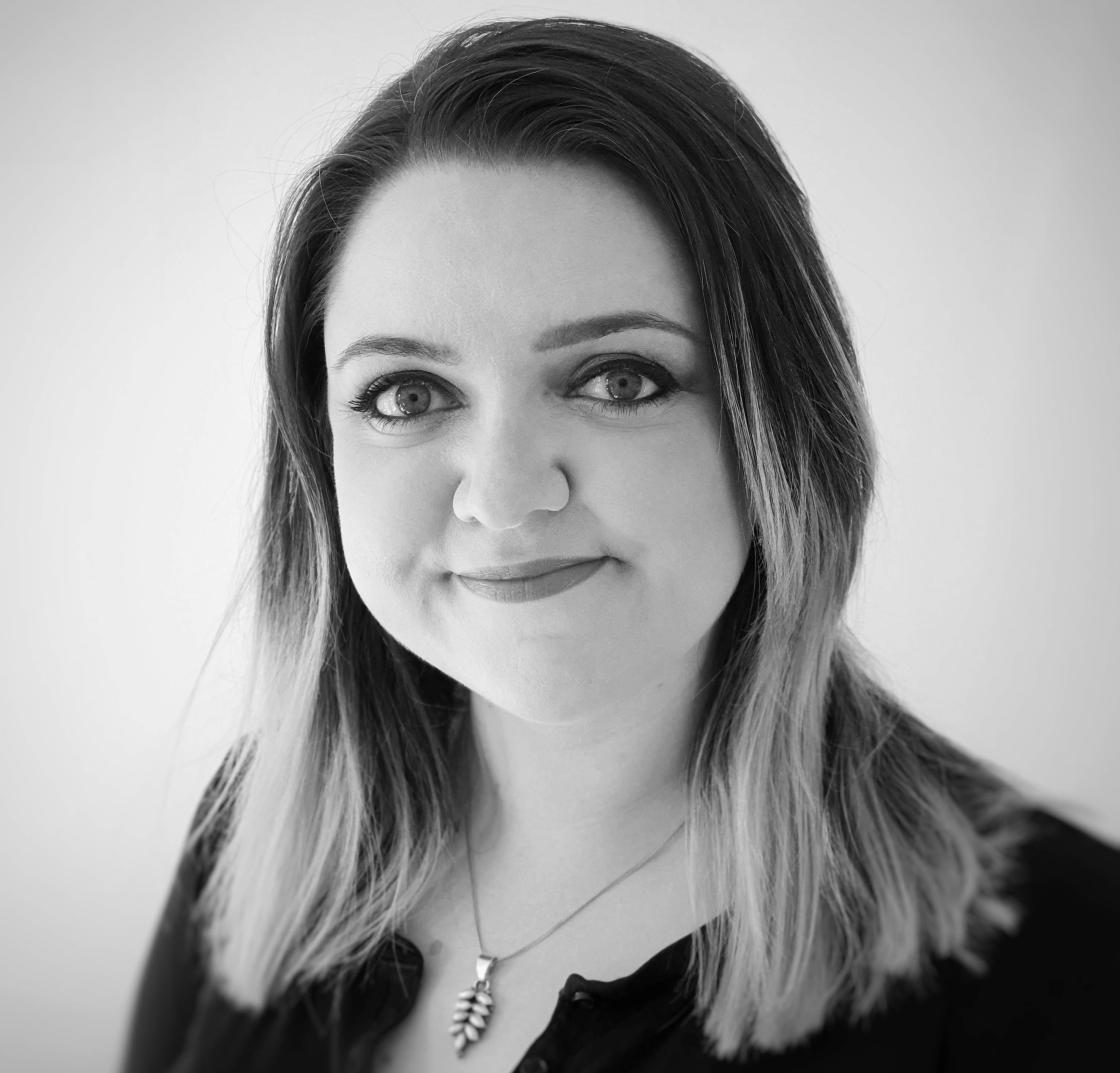
- Mark Crain is the executive director at Dream of Detroit, an initiative to combine community organizing with housing and land development to revitalize a neighborhood and build a thriving, healthy community on the Westside of Detroit. DREAM organizes local residents as well as people from throughout the metro-area Muslim community in the fight to achieve racial and economic justice in Detroit’s neighborhoods. Prior to DREAM, Mark honed his skills in digital strategy and community organizing at MoveOn, the Obama 2012 campaign, and the Inner-City Muslim Action Network. A graduate of Northwestern University and Cranbrook Schools (Class of 2005), he currently serves on the boards of the Detroit Justice Center, ReThink Media, and Emgage Foundation. For more information about Crain’s work, visit the Dream of Detroit website.

Lecture Two: War, Religion, and the Meaning of Medievalism in the Cranbrook House Library
Sunday, April 24, 2022, 3:00 – 4:30pm EDT
The lecture series continues with a presentation by art historian Jennifer Borland on representations of medieval history in twentieth-century homes. Like many patrons of the Arts and Crafts, Cranbrook’s founders repurposed the art of the past, using historic forms to speak to the pressing concerns of their present. In the Cranbrook House Library, George Booth’s 1917 design for the library overmantel encloses a scene of idealized artisanry with a frieze of Christian Crusaders and their Muslim opponents. Carved by German immigrant artist John Kirchmayer, the overmantel includes a cartoonish figure with a long moustache, turban, and curved sword that breaks with the elegant naturalistic style of the rest of the carving.
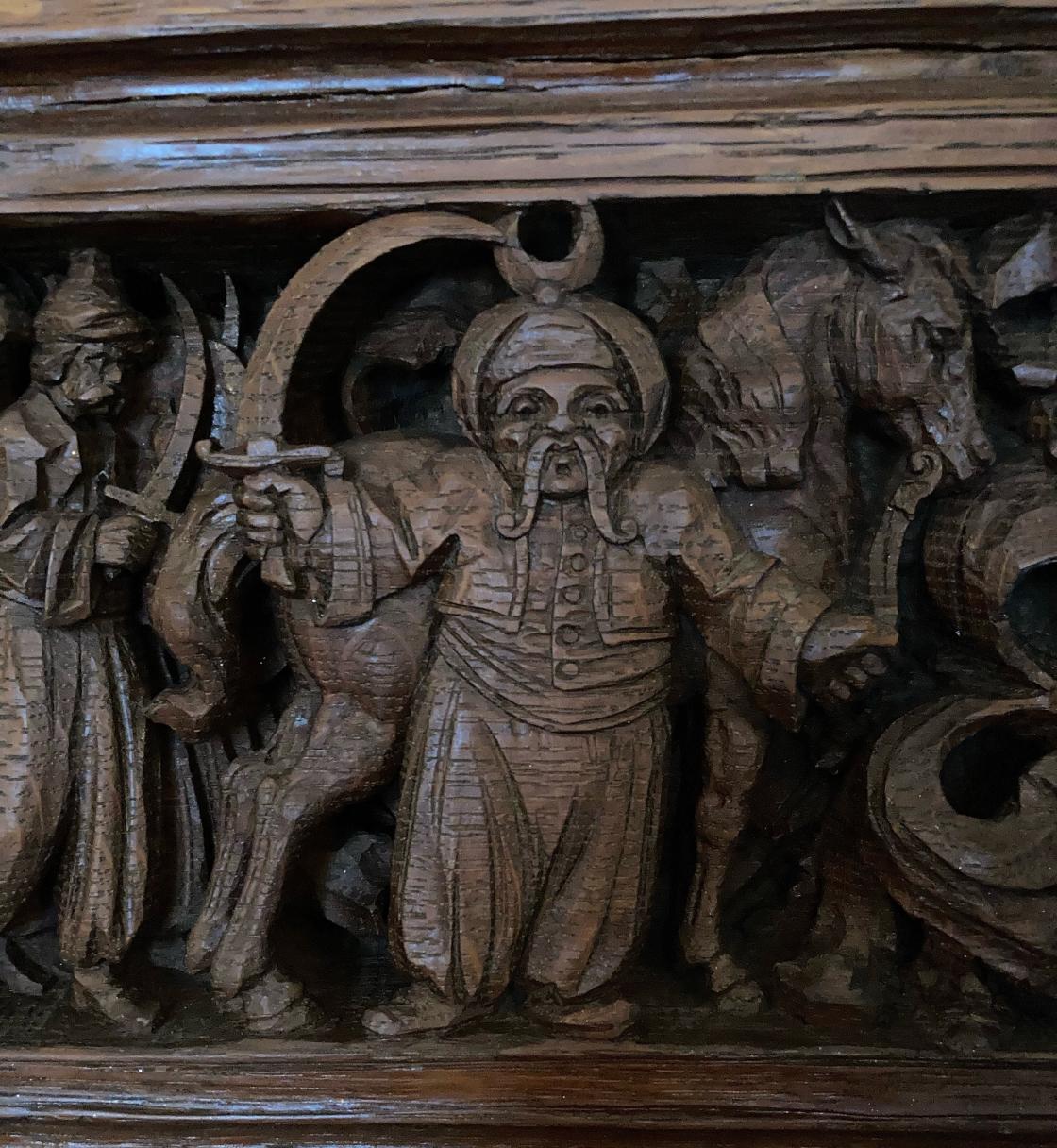
The overmantel raises more questions than answers: Why did Booth or Kirchmayer choose to include a racial caricature in this scene? What did the Arts and Crafts Movement have to do with the Crusades? How did these seemingly decorative elements hint at religious and military conflicts between the Ottoman Empire and Allied Powers of World War One?
Addressing these questions, Borland’s presentation will open out from the overmantel to explore why medieval objects, imagery, and ideas mattered in early twentieth-century America. Borland will draw on her research into medievalism at Glencairn, the castle-like home and art collection built by Pittsburgh Plate Glass heir Raymond Pitcairn north of Philadelphia in Bryn Athyn, Pennsylvania.
Introducing Borland’s presentation and telling the story of the Cranbrook overmantel’s design, carving, and legacy will be Nina Blomfield, the Decorative Arts Trust Marie Zimmerman Collections Fellow for Cranbrook Center for Collections and Research.
Guest Speaker:
- Dr. Jennifer Borland is Professor of Art History and Director of the Humanities Initiative at Oklahoma State University whose research is casting new light on the meanings of medievalism in the homes of wealthy Americans. She is a founding member of the Material Collective and managing editor of the journal Different Visions. Her 2022 book, Visualizing Household Health: Medieval Women, Art, and Knowledge in the Régime du corps (Penn State University Press), examines a thirteenth-century health handbook—a medical self-help guide for the heads of wealthy households—commissioned by the countess of Provence, Beatrice of Savoy. For more information, visit Dr. Borland’s webpage on the Oklahoma State University website.

Lecture Three: The Rediscovery of America: Reinterpreting the Images of Native Americans in Cranbrook’s Map Room
Sunday, May 1, 2022, 3:00 – 4:30pm EDT
The lecture series concludes with works of art displayed in the historic Cranbrook School for Boys Map Room. One of the earliest acquisitions was a painting by Oscar Berninghaus, A Hunter of Taos. Purchased from the artist by George and Ellen Booth’s youngest son Henry, the painting of the contemporary Pueblo farm laborer Santiago Bernal—a model who Berninghaus romantically portrayed wrapped in an Indian blanket and holding a bow and arrow, a proud representative of a “vanishing” culture—was hung in the library lobby in time for the school’s opening in September 1927.

The following year, George Booth commissioned a mural for the opposite wall, a Map of North America Depicting the Principal Expeditions of Discovery and Exploration. While the European explorers and their vessels, including Christopher Columbus and the Santa Maria, loom large on the map, the continent’s inhabitants—the Indigenous peoples who would be violently displaced by the colonists—are noticeably absent. To look at the map, the continent was empty and waiting for “discovery.”
Helping us contextual these images painted by white Americans, both in terms of their creation in the 1920s and our contemporary moment, is Dr. Ned Blackhawk. A historian and member of the Te-Moak Tribe of Western Shoshone, Blackhawk’s research is transforming the field of Native American studies and fundamentally recasting the way U.S. history is analyzed and written. Drawing from his forthcoming book, The Rediscovery of America: American Indians and the Unmaking of U.S. History, Blackhawk argues that we cannot understand US history without a sustained and enduring engagement with Native American history.
Setting the stage for Blackhawk’s lecture and sharing the story of the works of art that the Booths collected for the library lobby known today as the Cranbrook Map Room, is Kevin Adkisson, Curator for Cranbrook Center for Collections and Research.
Guest Speaker:
- Dr. Ned Blackhawk (Western Shoshone) is a Professor of History and American Studies at Yale and a former faculty member at the University of Wisconsin, Madison. A graduate of McGill University, he earned his master’s degree in History from University of California, Los Angeles, and his Ph.D. at the University of Washington. He is the author of Violence over the Land: Indians and Empires in the early American West (Harvard, 2006), which received a 2010 “Book of the Decade” award from the Native American and Indigenous Studies Association. His current book project, The Rediscovery of America: American Indians and the Unmaking of U.S. History, is under contract with Yale University Press. For more information, visit Dr. Blackhawk’s webpage on the Yale University website.
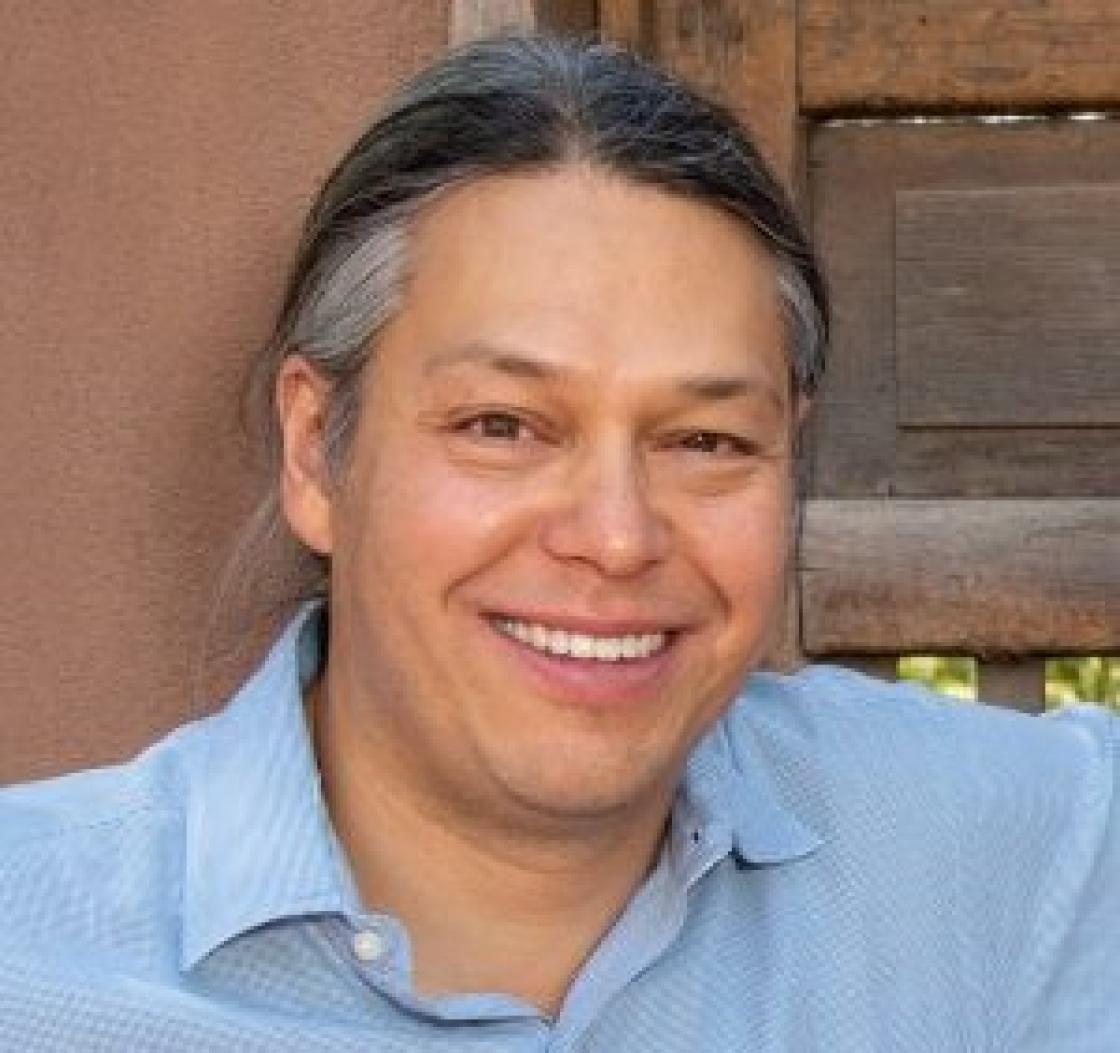
About the Bauder Lecture Series
This program represents the sixth installment of the Center’s annual Lillian and Donald Bauder Lecture Series. Established in 2016 through a generous gift from Cranbrook President Emerita Dr. Lillian Bauder and her late husband Donald Bauder, this endowed lecture series allows the Center to bring to campus speakers of national significance whose work intersects with the history of Cranbrook and its legacy.
- The inaugural Bauder Lecture in 2017 brought to Cranbrook Canadian journalist and author David Sax for a conversation about his book The Revenge of Analog: Real Things and Why They Matter (2016).
- The second lecture in 2018 featured Columbia University professor of art history and MoMA curator Barry Bergdoll, who told the story of Frank Lloyd Wright’s career and the successful transfer of Wright’s archive from Taliesin to New York.
- During the third lecture in 2019, Tim Whalen, Director of the Getty Conservation Institute in Los Angeles, presented five of the Institute’s multidisciplinary projects and their ongoing role in the conservation of the world’s cultural heritage.
- In the 2020 lecture, the Center’s first virtual lecture and one that remains online, Brendan Cormier, a Senior Curator at the Victoria and Albert Museum in London, discussed his groundbreaking exhibition, “Cars: Accelerating the Modern World.”
- The virtual lecture series in 2021, “Unsettling Landscapes at Cranbrook: Histories of Indigenous Communities, the Japanese Experience, and Suburban Segregation,” which also may be watched online, featured Sarah Anthony, Bonnie Clark, Gregory Fioritto, Eric Hemenway, Mika Kennedy, John Powes, and Thomas Sugrue.
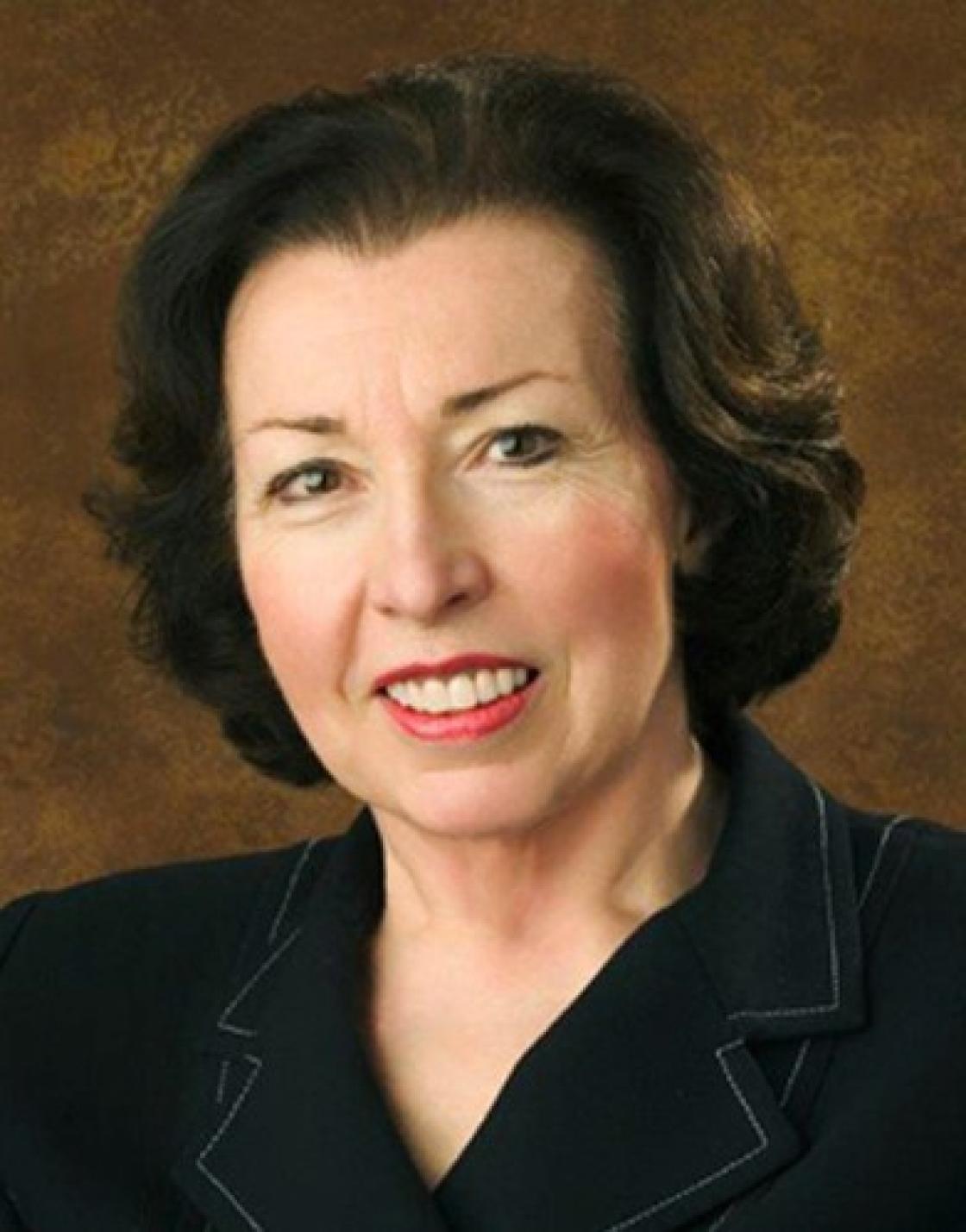
A visionary leader, Dr. Bauder served as Cranbrook’s President and Chief Executive Officer from 1983 to 1996, a period during which she not only developed Cranbrook’s first community-wide strategic plans but also created a master plan that ultimately led to the building of the Vlasic Early Childhood Center, the Williams Natatorium, the Academy of Art’s New Studios Building, and the expansion of the Institute of Science. In 1996, Dr. Bauder became Vice President of Masco Corporation, a position she held until she retired in 2007. A 2014 recipient of Cranbrook’s prestigious Founders Award, Dr. Bauder now resides in Columbia, Maryland.
Additional Registration and Viewing Information
On the Friday prior to each of the lecture dates, registered participants will receive an email with instructions on how to join these virtual experiences; a reminder will be sent one hour prior to the start of the lectures. Each link is unique, and advance registration is required for all participants. The lectures will begin promptly at their scheduled times and will be followed by a Q&A session. The Center’s virtual auditorium will open fifteen minutes before the lectures begin for informal conversation and to permit participants time to test their Zoom connection.
For additional information, please send an email to Center@cranbrook.edu or call Emma Brick, the Center’s Senior Administrative Assistant, at 248.645.3307. The Center’s regular office hours are Monday through Friday from 9am to 4:30pm.
PHOTO CREDITS
Overmantle in the Cranbrook House Library, designed by George Booth, carved by John Kirchmayer, 1918; Photography by P.D. Rearick, CAA '10.
Book Cover, Fallen Idols: Twelve Statues That Made History, Harper, 2021.
Carl Milles, Teacher of Youth (Study for Robert E. Lee Fountain), 1931, Photographed December 1939; Courtesy of Cranbrook Archives, Cranbrook Center for Collections and Research.
Photograph of Alex von Tunzelmann; Courtesy of Alex von Tunzelmann.
Photograph of Mark Crain; Courtesy of Mark Crain.
Detail of Overmantle in the Cranbrook House Library, designed by George Booth, carved by John Kirchmayer, 1918; Courtesy of Cranbrook Center for Collections and Research.
Photograph of Jennifer Borland; Courtesy of Jennifer Borland.
Oscar Edmund Berninghaus, A Hunter of Taos, 1926, Oil on canvas, 34 x 39 inches; Cranbrook Center for Collections and Research, Cultural Properties Collection, Middle School for Boys.
Photograph of Ned Blackhawk; Courtesy of the School for Advanced Research website.
Photograph of Lillian Bauder; Courtesy of Howard Community College website.
